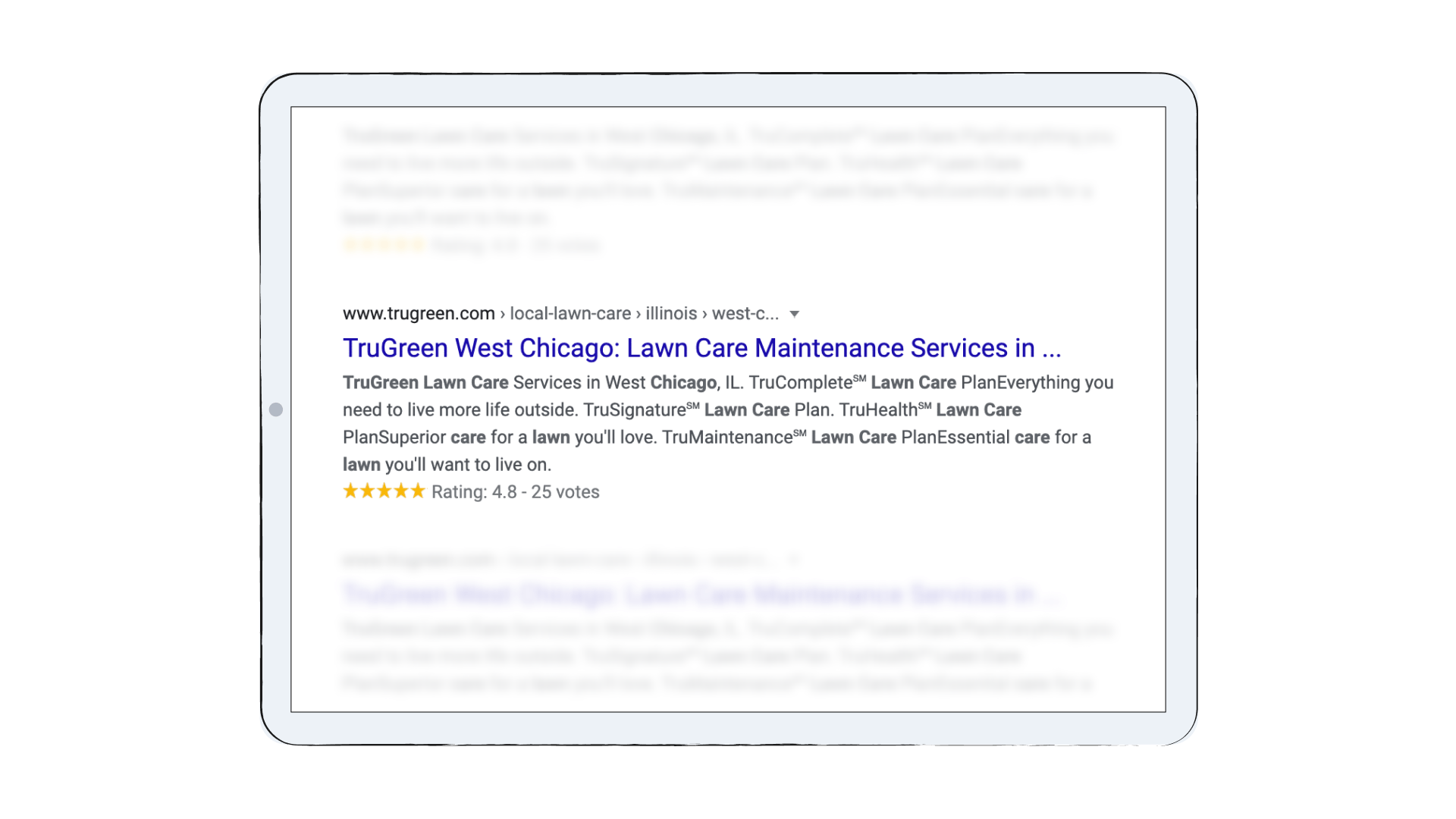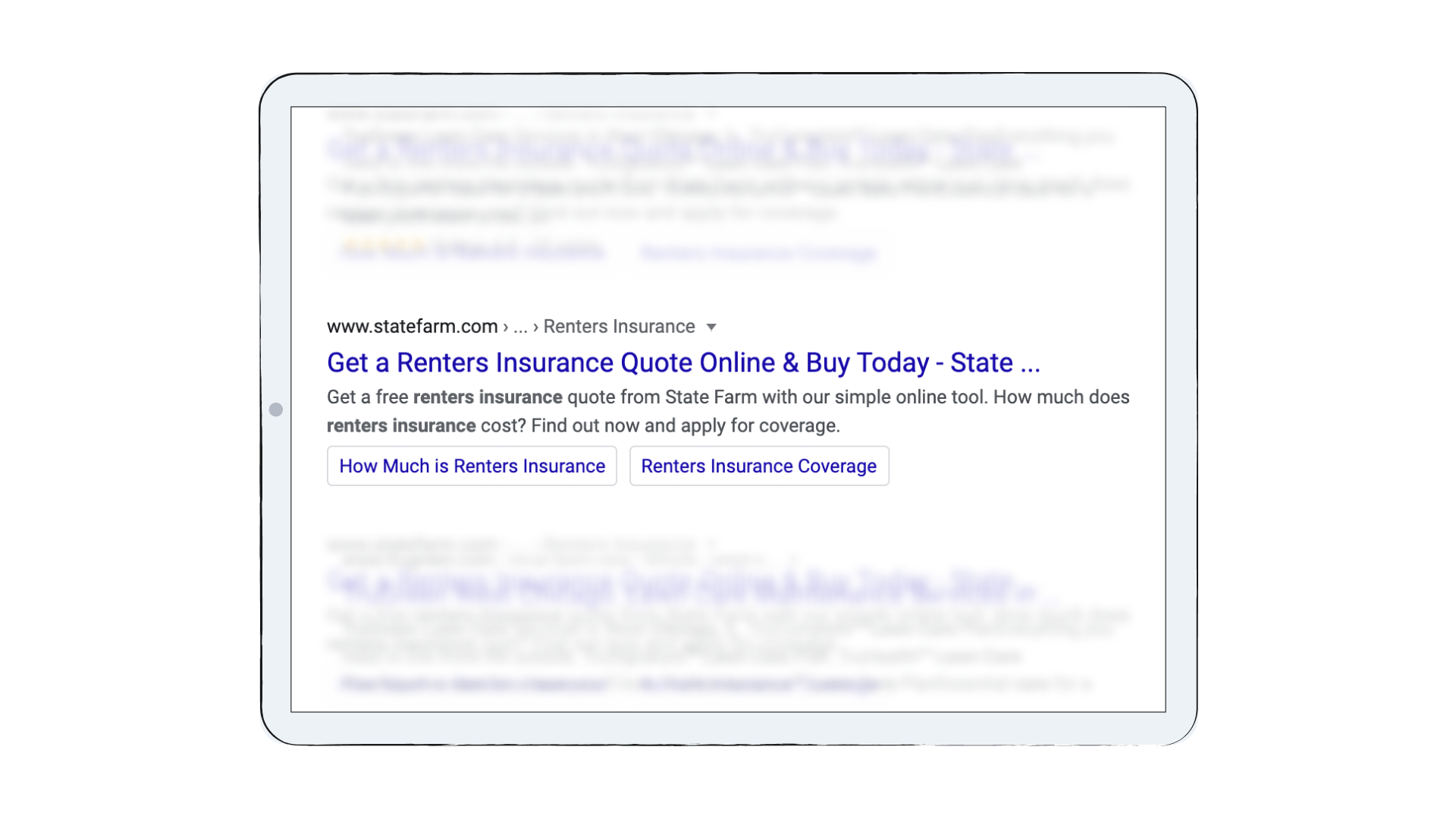- Request a demo
- United States

Optimizing for local search queries is a must. When you don’t prioritize local search, you’re leaving revenue on the table. Consider these statistics:
Local search is how your customers find you — but if you’re not on the first page of the SERP, you’re out of luck. And since local search queries correlate with higher purchase intent, this audience is a costly one to miss out on.
That’s why investing in a strong local SEO strategy is key. For the uninitiated, local search engine optimization is a subset of SEO that’s focused on winning local searches. Local searches are characterized by the inclusion of “near me” terms or the name of a city, zip code, or street.
Discover 10 local search tips that will help you supercharge your rankings and capture untapped revenue potential.
Local Search Engine Optimization (SEO) involves optimizing a business's online presence to enhance its visibility in local search results. This strategy focuses on attracting customers within a specific geographic location, making it especially crucial for brick-and-mortar stores or service-based businesses with physical locations. Local SEO efforts include optimizing the business's website, creating and managing Google Business Profile listings, obtaining online reviews, and ensuring consistent and accurate business information across various online platforms. By implementing these practices, businesses can improve their chances of appearing in local search results when potential customers are seeking products or services in their vicinity, ultimately driving more foot traffic and engagement within the local community.
Local SEO involves optimizing a business's online presence, making it particularly vital for enterprises with physical locations. Furthermore, it encompasses tangible benefits of local SEO, including increased visibility, targeted marketing, and the ability to reach a local audience effectively. By focusing on optimizing Google Business Profile listings, obtaining positive reviews, and ensuring consistent business information across various platforms, local SEO enhances a business's online reputation and trustworthiness. These strategies contribute to higher rankings in local searches, driving foot traffic for physical stores and providing a competitive edge in today's digital marketplace. Overall, local SEO emerges as a crucial component in establishing a strong online presence, connecting with the local community, and driving business success.
Understanding the multifaceted impact of local SEO is essential for businesses seeking to optimize their online presence and tap into the tremendous potential of local consumer engagement. Here are some key benefits of local SEO, each contributing to the overall success and growth of businesses operating within specific geographic areas:
When you run a local search, Google Business Profiles are often among the top results. These listings provide a quick overview of your business on the SERP, including its address, hours of operation, Google rating, and a click to call button. Clicking into the individual listings provides additional information like reviews, photos, directions, and a link to your company website.

To ensure your Google Business Profiles rank well in local searches, you need to include information that is accurate, complete, and helpful. First, make sure your addresses, hours of operation, and phone number are up-to-date. In addition, including appealing photos on your profile can help you tell the story of your business and increase engagement. Finally, you’ll need to have a strong review management strategy in place (more on this next) — your star rating and quantity of reviews are key ranking factors for your Google Business Profile page. You can learn more about how to improve your Google Business Profile ranking on this Google FAQs page.
One of the most common next actions after engaging with a Google Business Profile is to call. 24% of people who click a Google Business Profile call directly from the listing. And, during the COVID-19 outbreak, calls from Google My Business doubled.
To capitalize on this trend, marketers are placing call tracking phone numbers in their Google Business Profiles. With a call tracking solution, you can see the quantity and quality of calls driven by your GMB listings. With these insights, you can report your full SEO performance and make optimizations to your GMB pages to drive higher quality phone calls.
Don’t worry: adding DNI (Dynamic Number Insertion) trackable phone numbers to your website and listings doesn’t interfere with Google’s NAP.
In the realm of local SEO, the fundamentals of keyword research remain a linchpin for crafting a successful strategy. Keyword research serves as the bedrock for understanding the language and queries used by local audiences when searching for products or services. Identifying relevant keywords then enables businesses to align their online content with the specific terms and phrases potential customers use, fostering better visibility in local search results.
Local SEO practitioners should delve into the nuances of their target audience's search behavior, recognizing that the choice of keywords can significantly impact a business's ability to attract local traffic and conversions. Understanding of the unique preferences and needs of a local audience is crucial for effective keyword selection. By incorporating location-specific terms and phrases, businesses can optimize their content to resonate with the local community.
As mentioned above, reviews are one of the most important ranking factors for Google Business Profiles. They’re also important ranking factors for other local listing sites your business may appear on, such as Yelp, TripAdvisor, Angie’s List, Zocdoc, and more. And, beyond rankings, they also heavily influence if local searchers will engage with your listing and ultimately become customers.
Below are some quick tips you can use to manage your reviews:
NAP or Name, Address, and Phone Number, is a critical ranking factor for local search results. To ensure you’re a legitimate business, Google will cross-reference your company name, the addresses of your various locations, and the phone numbers of those locations across your website and across other web listings.
To help with NAP consistency on your website, consider adding your company name, the addresses of your locations, and the phone numbers of your locations to your pages as schema markups. Schema, also known as structured data, is the language of search engines — it is easier for crawlers to identify the data in this format. You can add schema markups to your site as HTML code or plugins.
To help with NAP consistency across the web, some marketers are using listings management tools like Yext. After you put your location information in one centralized interface, listings management tools automatically update the information across hundreds of web listings.
If you use DNI (Dynamic Number Insertion) call tracking phone numbers on your website or in your listings, these will have no negative impact on your NAP score. DNI displays a unique phone number to each visitor based on the marketing source the visitor engaged from. This unique phone number is populated through a dynamic snippet of javascript code that is not crawled by search engines — therefore, it does not affect NAP. The default location phone number remains hard-coded on the site to be crawled by search engines.
As mentioned above, adding schema, the language of search engines, to your website code can help crawlers more easily identify important information like your business’s name, address, and locations. But you can also use schema to populate more information about your business on the SERP.
For example, you can add schema markups that display your reviews right under your meta description.

You can also add schema markups that list FAQs and link to pages that can answer them. This gives you more SERP real estate — and helps you clear up any common pre-purchase questions searchers have.

In addition, schema markups can help you acquire rich snippets. Rich snippets differ from featured snippets, in that they contain deeper information than just text. For instance, they may contain reviews, prices, dates, images, social profiles, and more.

When you take the time to add schema markup to your site, your SERP presence is more competitive and you can improve your CTR. Schema markups can also improve your local search rankings, as search engines can more easily crawl your site and understand why you should be ranked highly. See the complete list of schema markups you can include on your website here.
As mentioned above, 46% of all Google searches are looking for local information. If you’re not creating local content on your website, you’re missing out on a major opportunity to appear in these search results.
A best practice is to create location pages for each town, country, and region that you serve. When someone searches “Renters Insurance Chicago,” you’ll have a much easier time showing up in the results if you have a page for this location that mentions Chicago in key areas like the title tags, meta description, H1s, body copy, URLs, and image alt tags.
Of course, you shouldn’t create identical location pages with the location name switched out — Google will recognize this as duplicate content and it will harm your rankings. Instead, you should take the time to provide real, valuable information specific to each location. This includes location-specific testimonials, case studies, and FAQs. For example, if you’re selling renters insurance, you could include content around Chicago-specific tenant laws.

Link building is the practice of acquiring new links to your site from external domains. When you receive backlinks from sites with high domain authority, your site will be seen as more authoritative to Google. Increasing your domain authority helps your rankings increase.
When you’re working on a local link building strategy, consider how you can get backlinks from reputable local sources, like local business directories, local news publications, local blogs, and local charities or fundraisers that you sponsor.
Mobile site speed is an important ranking factor for all search engine queries. But for local SEO, the stakes for mobile optimization are particularly high. Local mobile searchers have high purchasing intent. If you recall, 88% of people who search for local businesses on a mobile device either call or visit the business within 24 hours. Making sure your site loads quickly on mobile is the difference between securing their business or giving them a poor site experience and losing them to your competitors.
Below are some tips to increase your mobile site speed:
While most marketers use tools like Google Analytics to measure the online conversions SEO is driving, many overlook a critical part of the local search consumer journey — inbound phone calls.
Call tracking ties phone leads and sales back to the webpages that drove them. This allows you to report all the conversions your best SEO pages are driving — both online and over the phone. You can also use these metrics to optimize your pages to drive more high-quality sales calls to your locations.
Optimizing a website for mobile users is quite significant, including making phone numbers clickable for enhanced user experience. In the context of local searches, where immediacy is often paramount, the ability to seamlessly connect with a business can be crucial. Many users conducting local searches are seeking immediate assistance or information, and being able to click on a phone number directly from a mobile device eliminates unnecessary friction in the customer's journey. This simple yet impactful feature streamlines the process for users, facilitating quick and direct communication with businesses, particularly in urgent situations.
Incorporating clickable phone numbers aligns with the user-centric approach of local SEO, acknowledging the urgency often associated with local searches. This optimization tactic ensures that businesses are easily accessible to potential customers. By reducing barriers and enabling users to initiate a call with a single click, businesses can improve their responsiveness and the overall user experience.
While you may be driving high-quality phone leads from your Google Business Profiles and organic traffic, this means nothing if your locations aren’t converting them to customers.
Invoca uses AI to analyze phone conversations and track agent and location performance. With these conversation intelligence insights, you can see which agents and locations are underperforming and failing to convert the leads you’re driving from SEO. You can then drill into the conversations to understand the issue and use the transcripts as coaching tools to increase conversions on calls driven by your SEO efforts.

Local SEO is not a “set it and forget it” process. You’ll need to continually add new elements to your website and test how they perform. You should also constantly monitor the site traffic you’re driving from local SEO and make optimizations to increase it.
In addition, it’s important to track how much of your local SEO traffic converts to revenue — because what do all those visitors matter if they aren’t turning into revenue? If this is a pain point for your business, the next step is to develop and implement a strong conversion rate optimization strategy to capitalize on your uptick in site traffic.
If you're laying out your plans for the coming year, you'll want to take a look at these statistics — they offer some valuable insights about the future of local SEO.
Nearly half of all Google searches, accounting for 46%, are location-specific, underlining the critical importance of local search marketing in SEO. Small to medium-sized businesses that neglect fundamental local SEO strategies risk missing out on the opportunity to rank for a significant portion of the 3.5 billion daily Google searches, with approximately 1.6 billion of them exhibiting local intent. (Source: Safaridigital.com)
The frequency of local searches is increasing, with 29% of consumers conducting weekly searches for local businesses. Given this regular activity, seizing the opportunity to direct these individuals to your local business is essential. (Source: Safaridigital.com)
Reviews serve as a primary source of information, influencing potential customers and shaping their perceptions of a business. Maintaining a positive online reputation through reviews is pivotal for building trust, attracting customers, and ensuring business success in the competitive landscape. (Source: onthemap.com)
This underscores the critical importance of maintaining accurate and up-to-date business information online. Ensuring the precision of details such as business hours, contact information, and location is vital to building and preserving trust with potential customers. An inaccurate online presence can directly impact a business's reputation and its ability to attract and retain local customers. (Source: onthemap.com)
The significant 15% close rate for leads through local SEO emphasizes its effectiveness in converting potential customers into actual clients for local businesses. For marketers engaged in local SEO efforts, this statistic highlights the substantial impact that well-optimized local strategies can have on driving conversions and ultimately contributing to the success of businesses in the local market. (Source: localiq.com)
Want to learn more about how Invoca can help you supercharge your local SEO strategy? Check out these resources:
